Genchi
Genchi is a project status reporting tool, focused on making it easier for managers to monitor their projects by seeing the perspective of each team member each day. A Silicon Valley startup we helped bring from idea to launch.
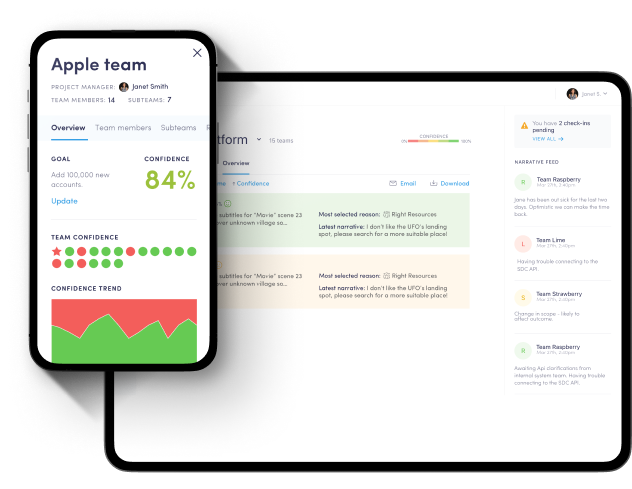
Why Genchi?
Genchi provides a way for teams who embrace transparency to achieve better outcomes. By taking in regular, candid feedback from the entire team working on a project, and making that feedback visible and actionable by project managers and stakeholders, the whole team is confronted with fewer surprises.

Meet founder, Rowland Savage.

Experience as a leading tech executive.
Rowland was at Atlassian, leading the integration of Trello (the popular Project Management tool) after a high-profile acquisition. When reporting for his Atlassian executive team, he was inspired by the team’s desire for quick ‘traffic light’ versions of status in each area. He realized there was a better way of getting the right information to the right people.
An idea for better reporting was born.
In the words of one CEO, “All projects are green until two weeks before delivery, and then they go red. So at any point, I really don’t know how they’re doing.” Genchi tracks project status by a spectrum — they will go from green to yellow to orange to red, as it becomes more and more unlikely to achieve their goal time. So people can intervene earlier in the process to help get it back on track.
Step into the SolutionLab.
Designli's proprietary roadmapping session, the SolutionLab, took Rowland’s napkin sketches to a fully fleshed-out product plan ready for technical execution.
Complex business logic with a simple UX.
A simple concept at heart, we quickly uncovered the underlying complexities of the idea behind Genchi. Each project deliverable, or ‘goal,’ has any number of dependencies, or sub-teams working on interconnected components that need to come together the moment before a project deadline is met. How would Genchi report these components individually, but also ‘roll them up’ for easy visualization?
Technical simplification of a desired feature set.
When building a ‘Minimum Viable Product’ for a new software system, each component being built needs to be dissected: each feature discussed and the various options documented and quoted. By doing this in our SolutionLab deep-dive, we were able to establish the simplest possible way each feature could be delivered to end-users to keep costs in check.
UX/UI Design & Prototype.
Graphic Design is where the vision for Genchi became a tangible, navigable prototype that was shareable with investors and key startup mentors.
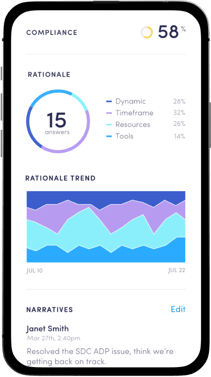
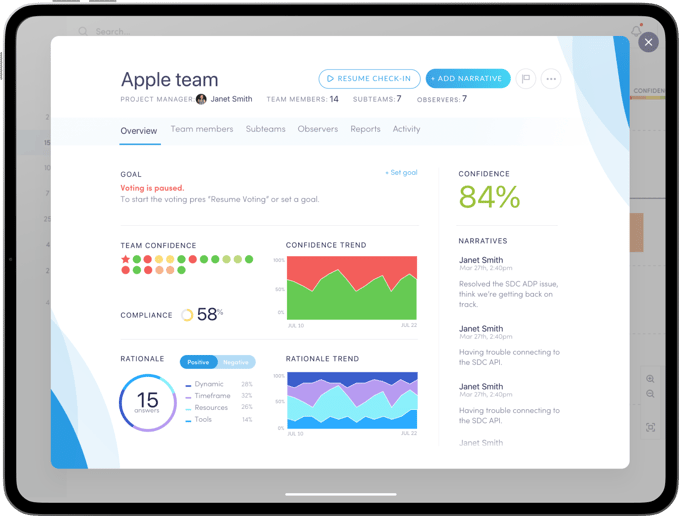
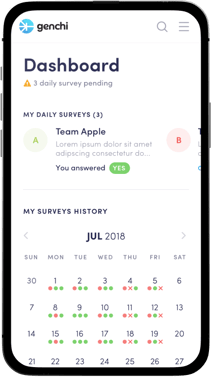
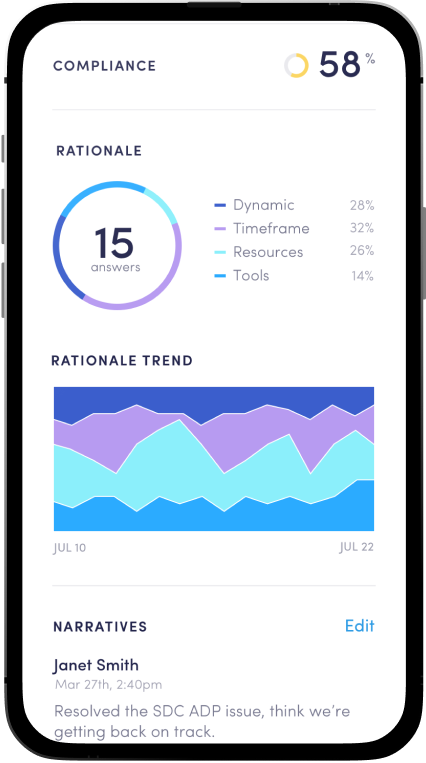

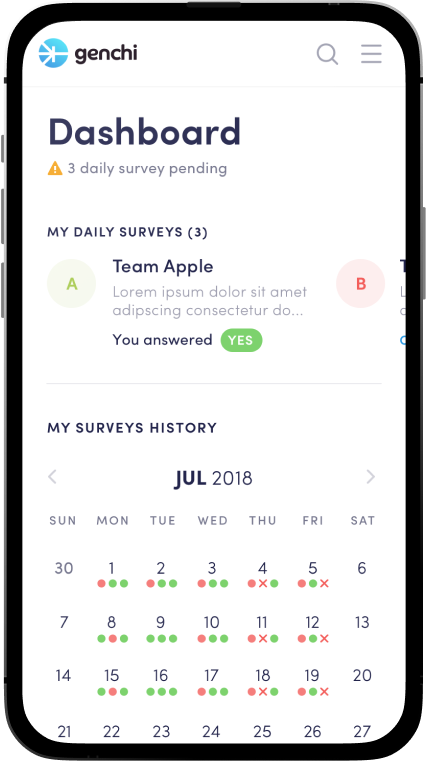
Agile development, launch, and ongoing product iteration.
Designli assisted with the Agile Development of the Genchi web-app, developed in Angular and Node. The solution includes a Slack Bot that teams can install to their Slack workspace to easily send their status reports. Working with a designated ‘Sprint Plan,’ the features that made up the Genchi system were broken down into digestible milestones so that progress could be regularly tracked. After core feature development had concluded, we launched Genchi to the world and have helped Rowland digest feedback from key users to inform ongoing product development and iteration.
Technologies used:
- Loopback
- NodeJS
- AngularJS
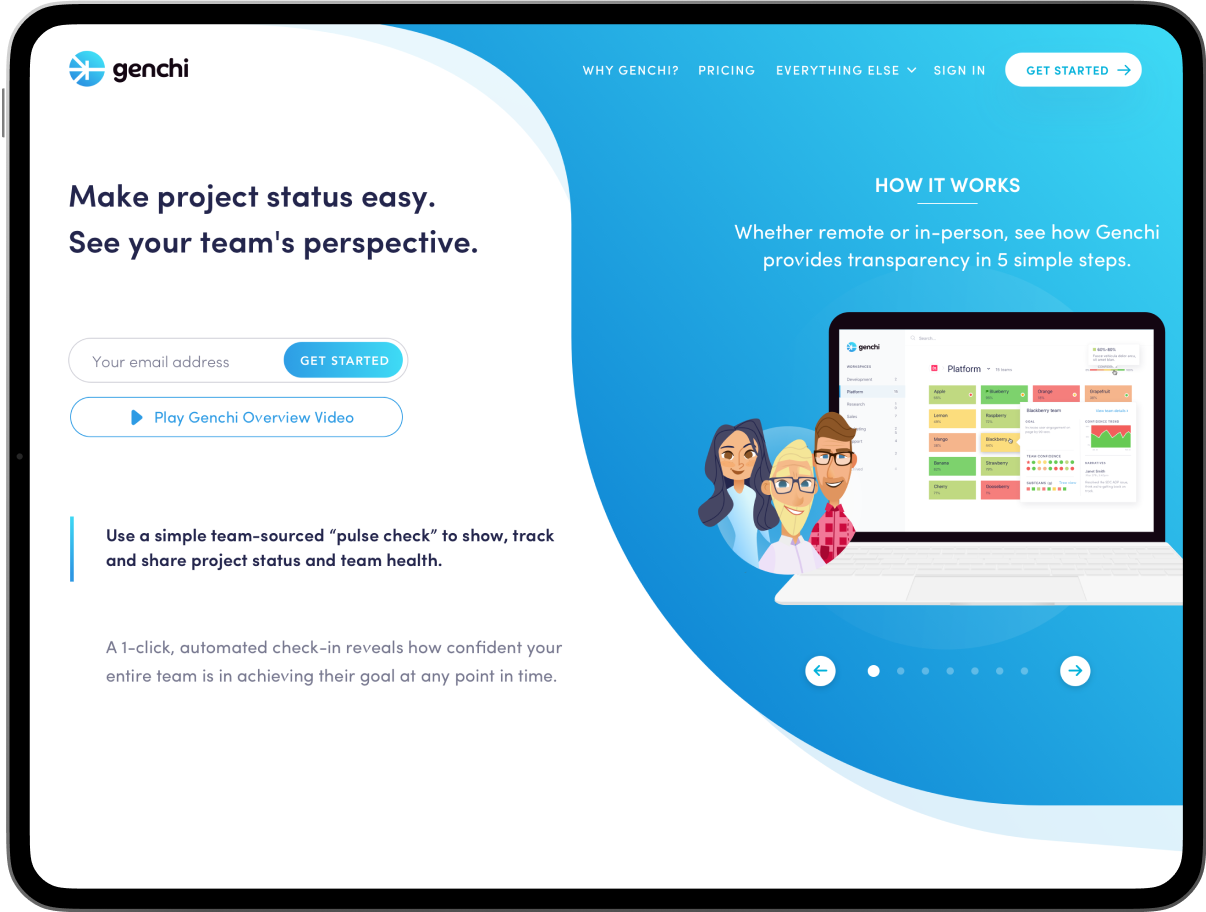
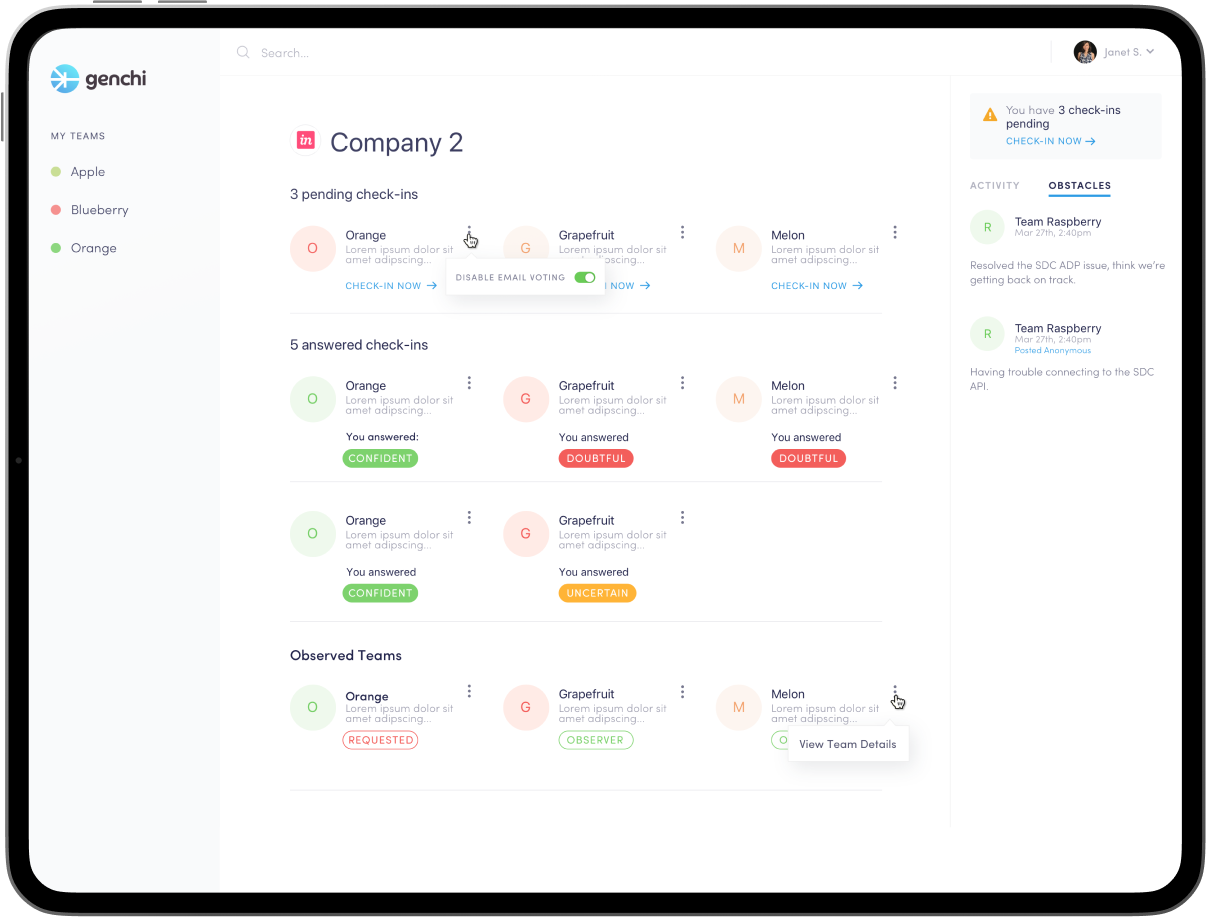
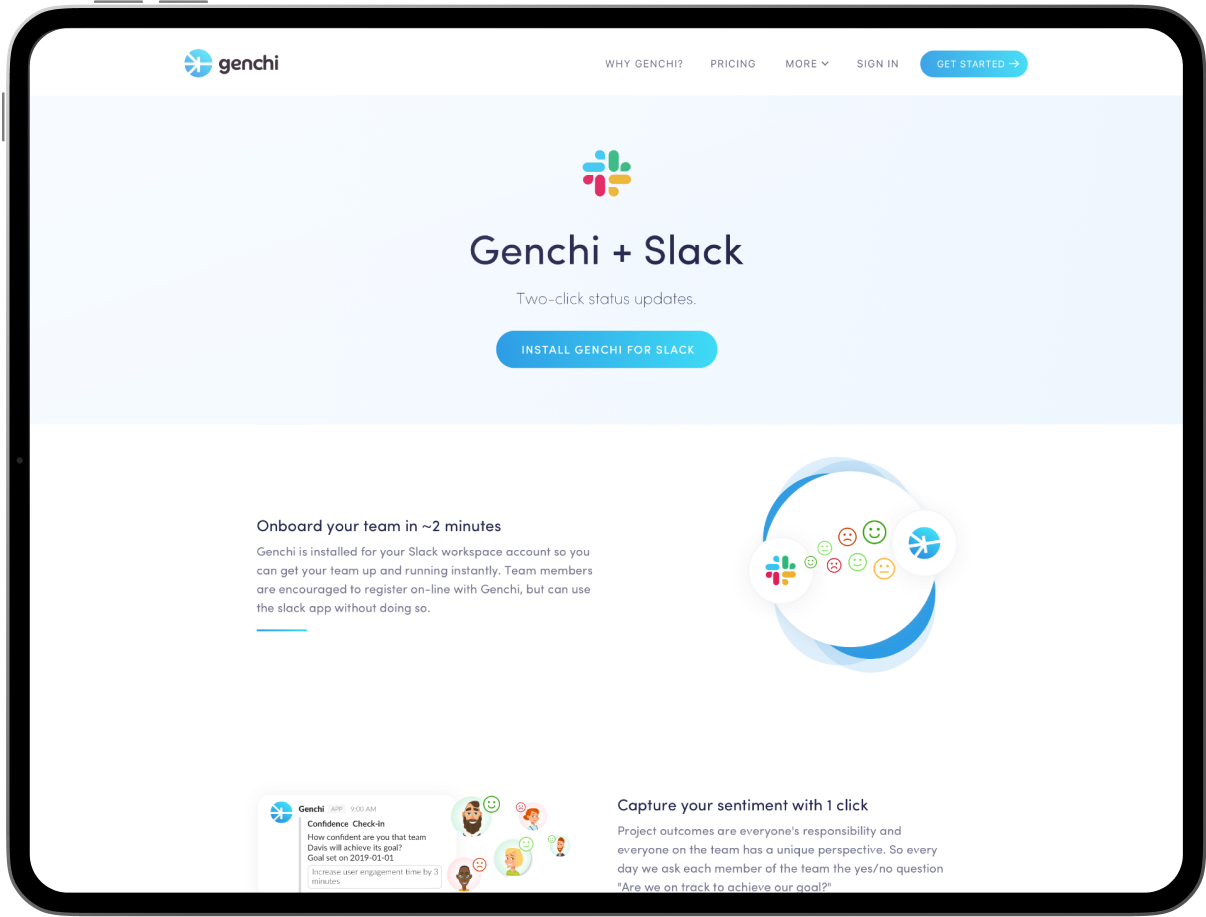
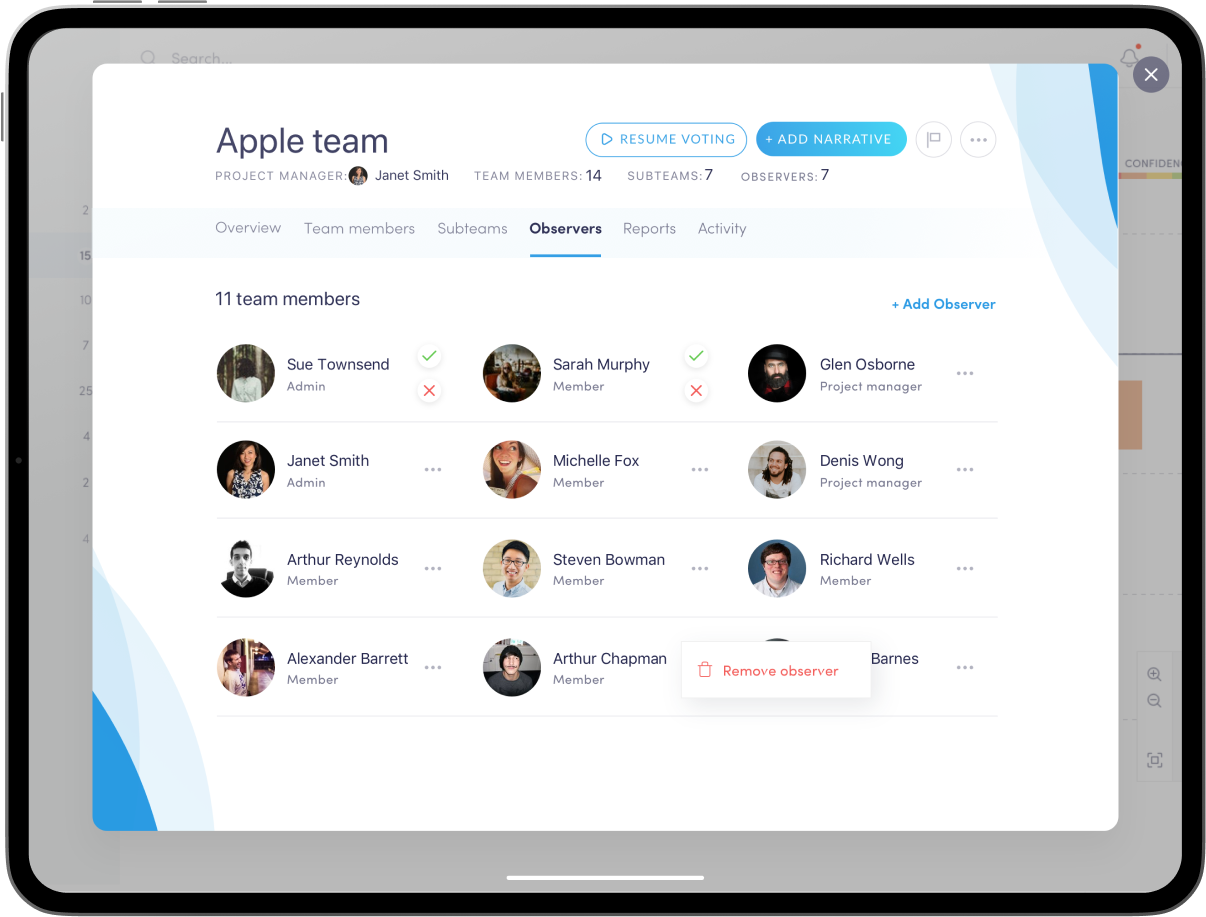
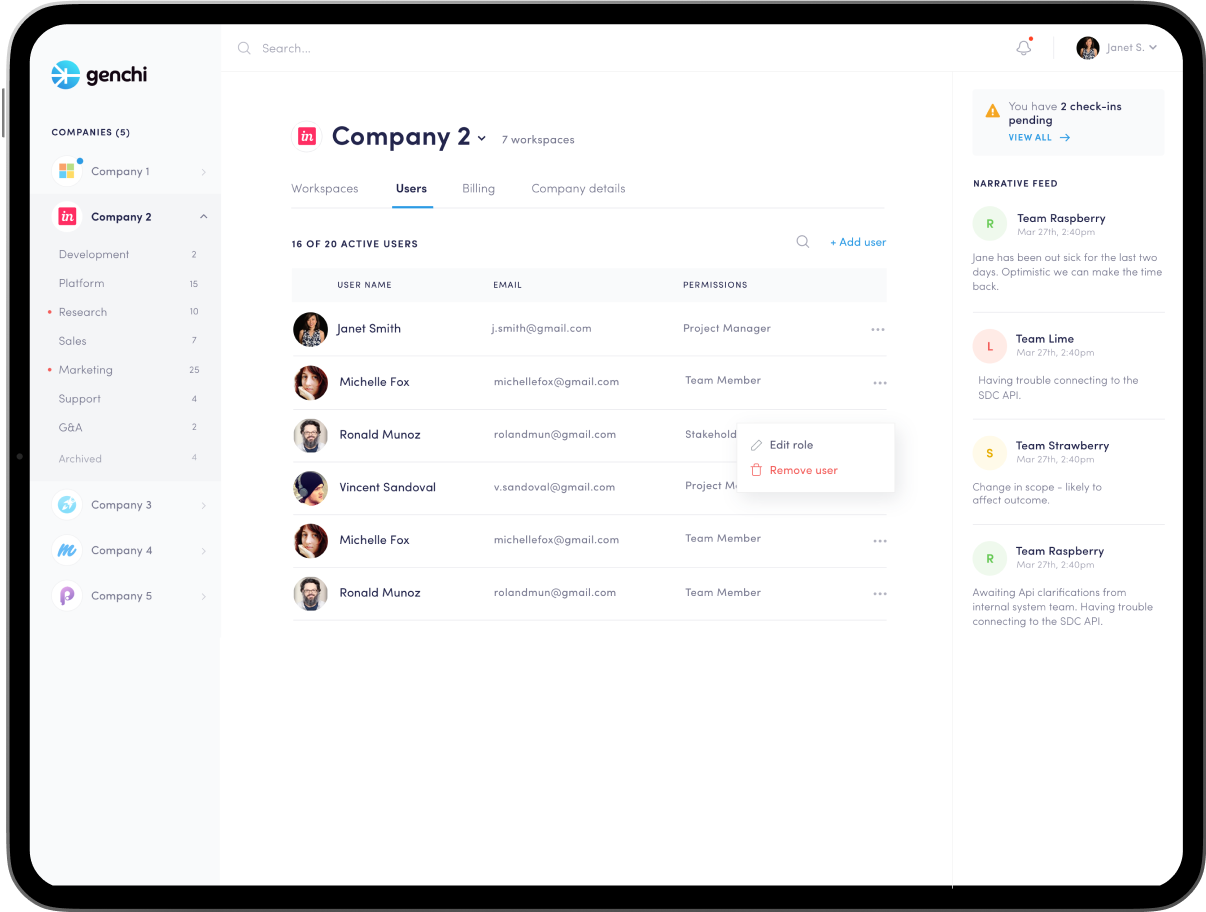
Designli’s follow through is great. They’ve basically taken on the role of a technical co-founder of my app.
Designli knows what they’re doing. They ask key questions and produce top-notch results.
